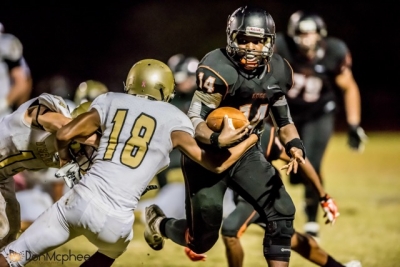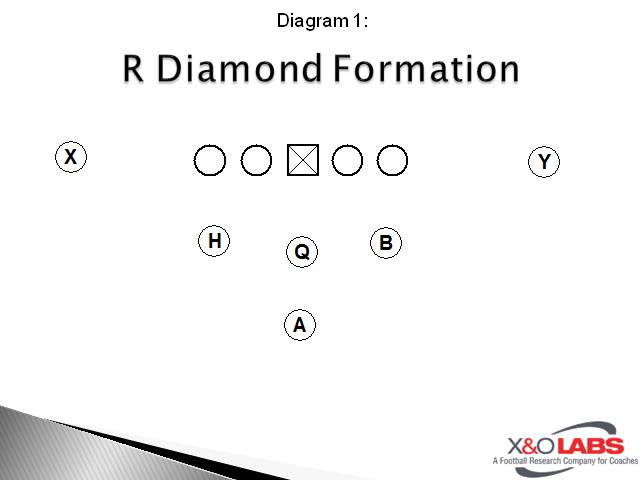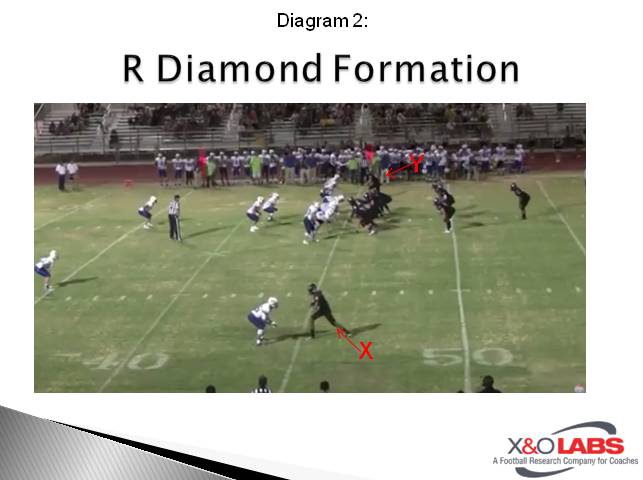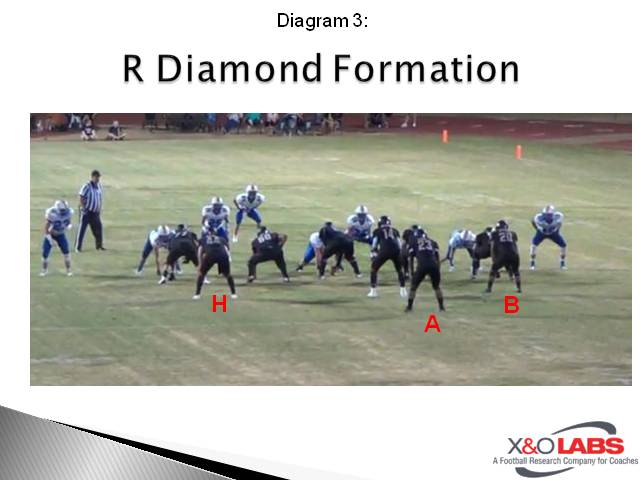By Ian Gardner
Quarterbacks Coach
Desert Edge High School (AZ)
Twitter: @igardner33
Introduction
 One key to success for any offense is forcing the defense to cover as much of the field as possible. When running condensed formations in the shotgun Flexbone, this can become more difficult. Often times teams will attempt to play a loaded box to stop the inside run. This past year, we regularly saw an 8-man box and even a 9-man box. To address this concern we worked hard on developing a solid outside run game to complement our inside run and triple option game.
One key to success for any offense is forcing the defense to cover as much of the field as possible. When running condensed formations in the shotgun Flexbone, this can become more difficult. Often times teams will attempt to play a loaded box to stop the inside run. This past year, we regularly saw an 8-man box and even a 9-man box. To address this concern we worked hard on developing a solid outside run game to complement our inside run and triple option game.
Our perimeter run game was all built around the idea that we wanted to protect our inside run game, which consists of the Belly and the Veer. Therefore, the looks we gave for our perimeter run game were the same for inside run and triple option. In our opinion, the more the defense had to worry about the better for us. Our perimeter run schemes helped us do that and were a huge part of our offense as we completed our state championship run this past season.
Flexbone Basics
Before we get into the concepts, here is a quick review of how we personnel this offense. This is important because it drives how we build off of our main concepts.
- OL – Athletic and mean, size is a bonus
- QB –Smartest player on the field. Great decision maker. Athletic with decent running ability and ball security is a must. Leader.
- A Back – Typical “dive” back. Inside the tackle runner. Willing blocker. Speed is a bonus.
- B Back – Quicker and more explosive of the backs. Great for perimeter run game. Willing blocker. Needs the ability to play WR and align in the slot.
- H Back – Most versatile player on the field. Must be the 2nd smartest player on the field. Must understand all formation alignment tags, blocking schemes, and at times catch and carry the football.
- X and Y – Most important thing is effort and desire to block. Strength and physicality is a plus. Pass catching and play-making ability is an added bonus and makes the offense even better.
When we call a play, we always go in order of “Strength – Formation – Alignment Tags – Motions/Shifts – Play Call & Direction”. For example, “R Diamond Sling Ozzy Right”. At times, our plays can get to be a bit long when you include all the tags and motions. Thus, we huddle and utilize a QB wrister for our play calling.
In our offense, the play call determines how the A Back aligns. In the example above, “Ozzy Right” the A Back would align off-set gun to the left of the QB, slightly in front of the QB, splitting the inside leg of the tackle. In “Belly Right” (inside zone read), the back getting the ball would align 6 yards deep, splitting the outside leg of the guard to the left side. Different play calls determine if the A Back aligns off-set gun or in pistol.
Base Formations – Diamond & Navy
For the most part, we ran our perimeter run plays out of Diamond and Navy formations. In our shotgun Flexbone offense, the QB has his heels at 4.5 yards. In Diamond, the B and H Back both align even with QB, splitting the inside leg of the tackle. The B is to the strength, and the H is opposite. The A Back aligns based on the play call. The receivers align on the numbers as the Y goes to the strength of formation, the X goes opposite.
Note : All these diagrams are in “Right” formation strength.












